site search
online catalog
EXTRAORDINARILY RARE AND IMPORTANT CONFEDERATE RAINS BARREL TORPEDO - 1 OF 2 KNOWN - FROM THE TEXAS MUSEUM
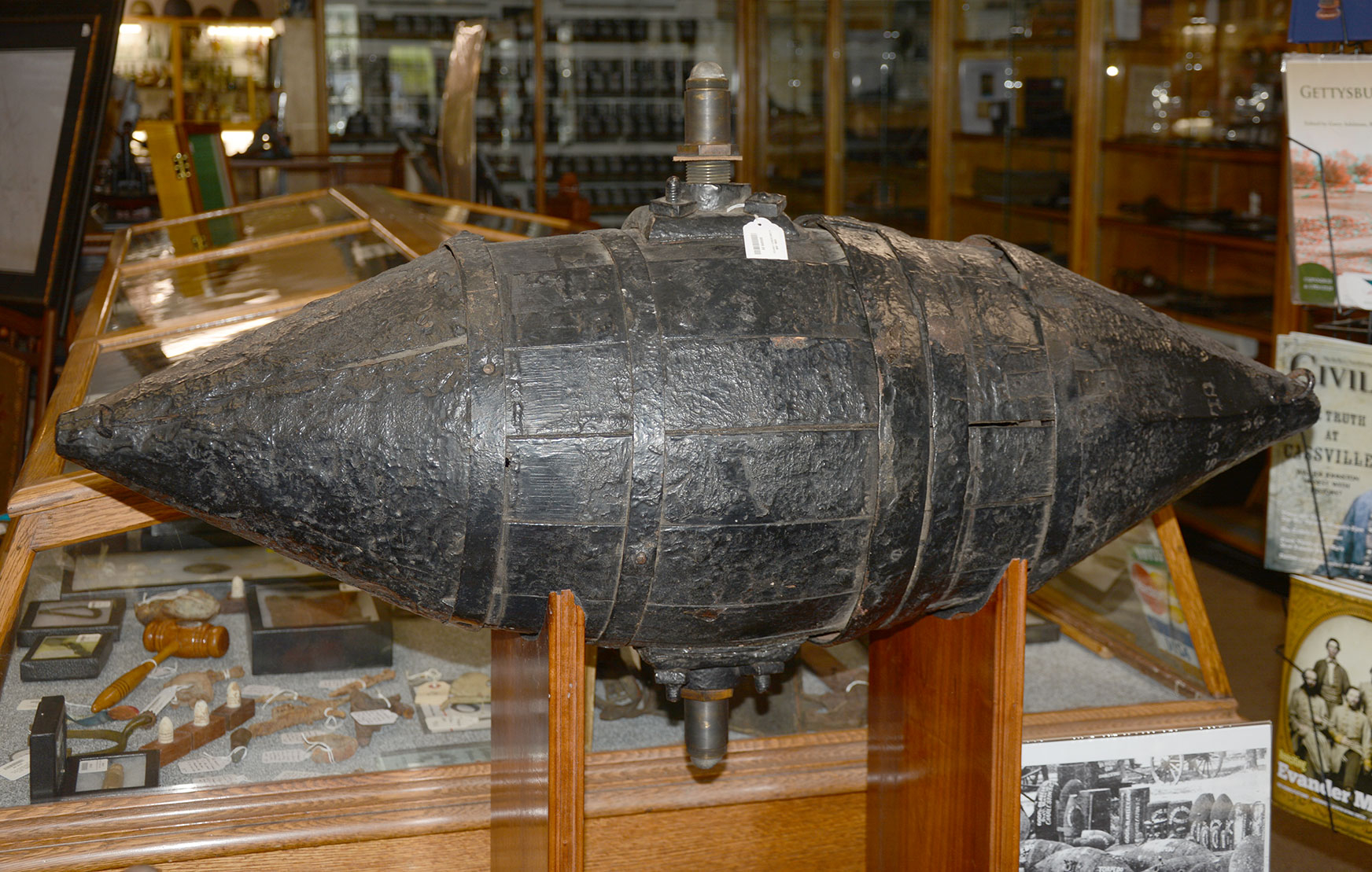
Hover to zoom

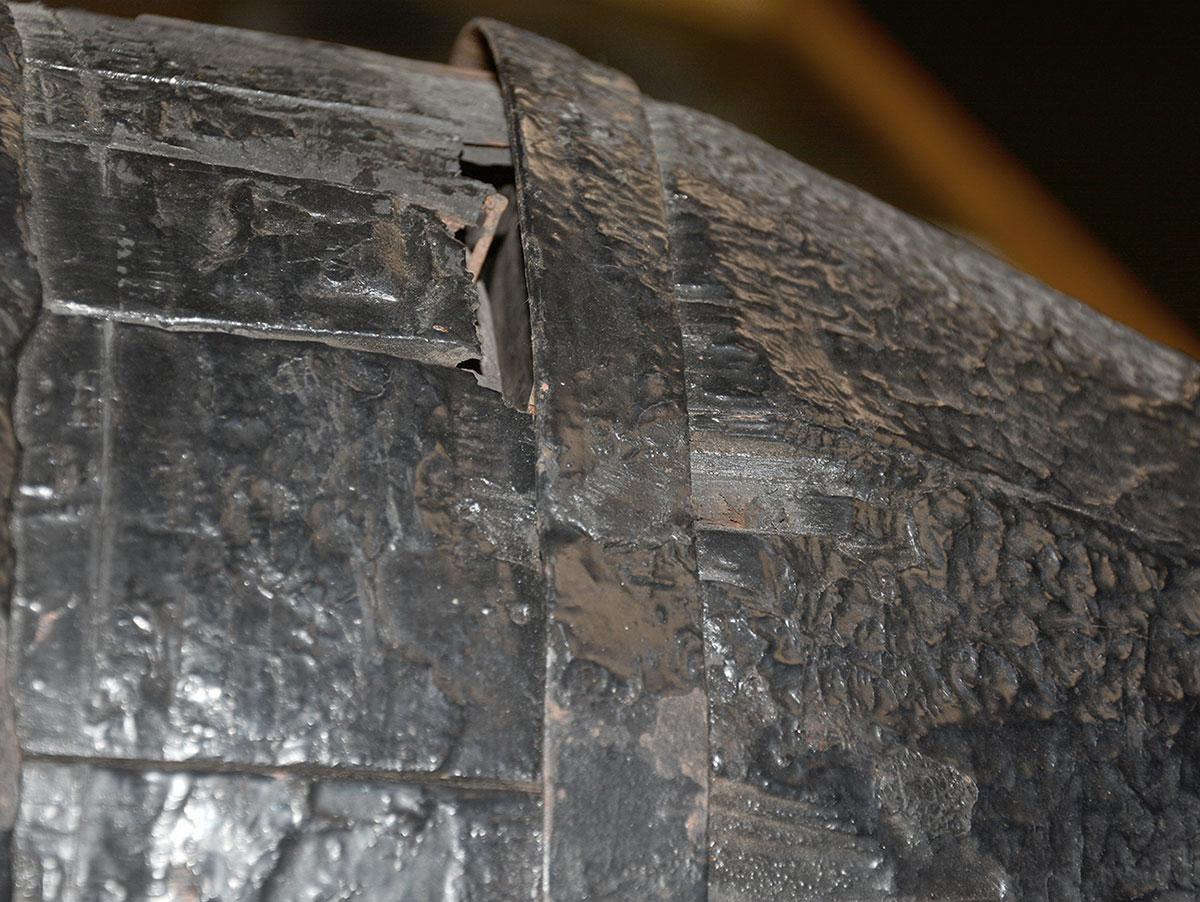
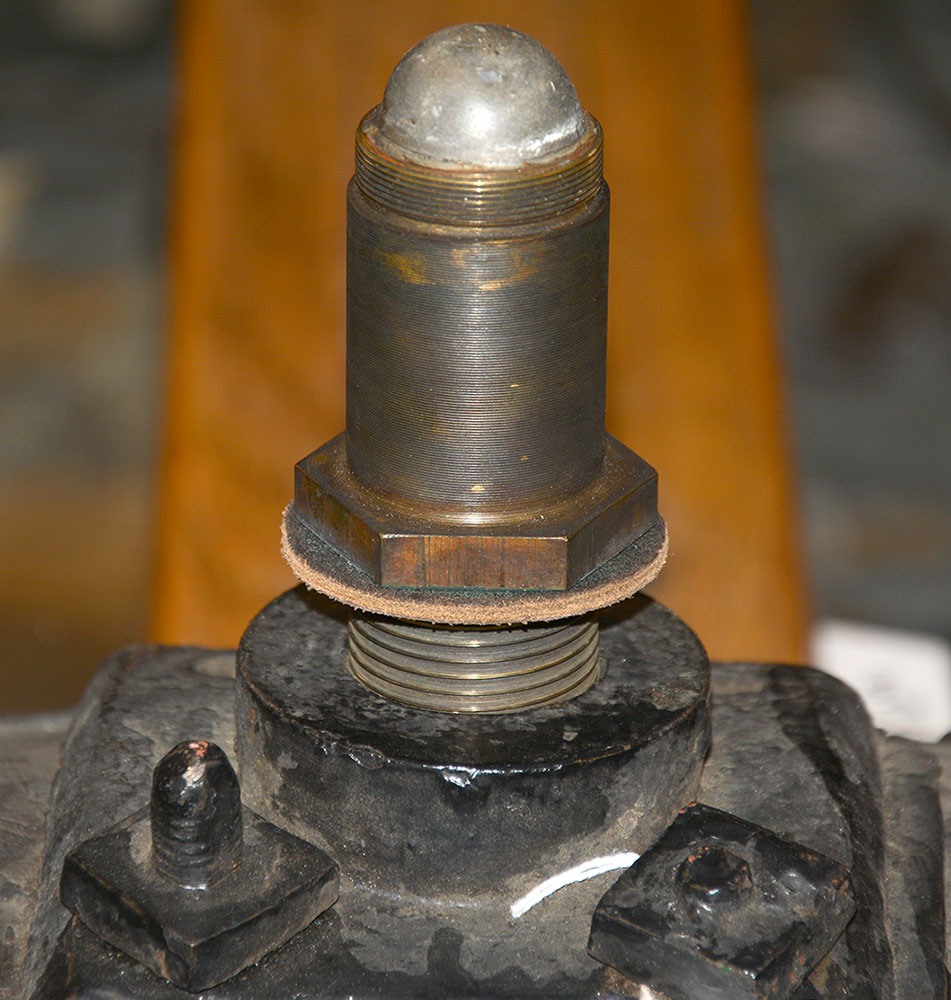
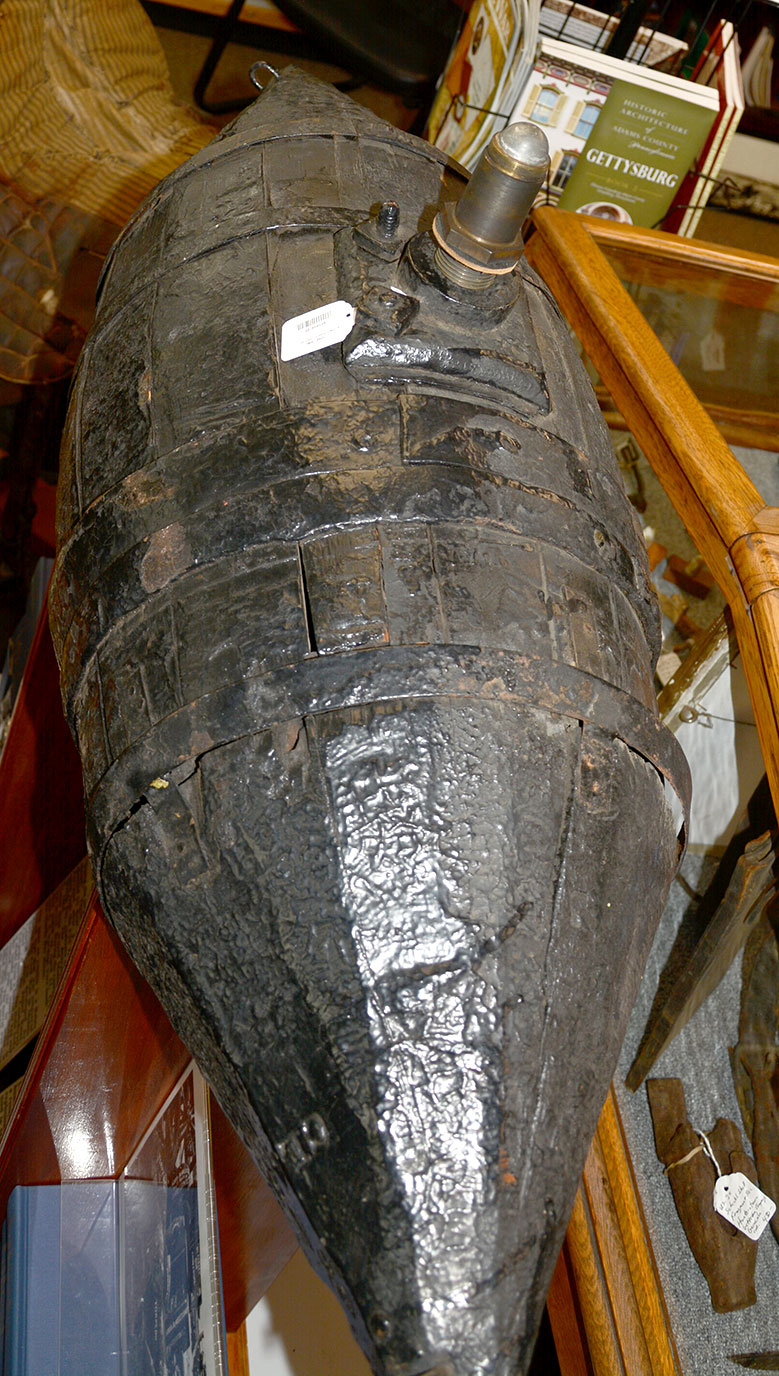
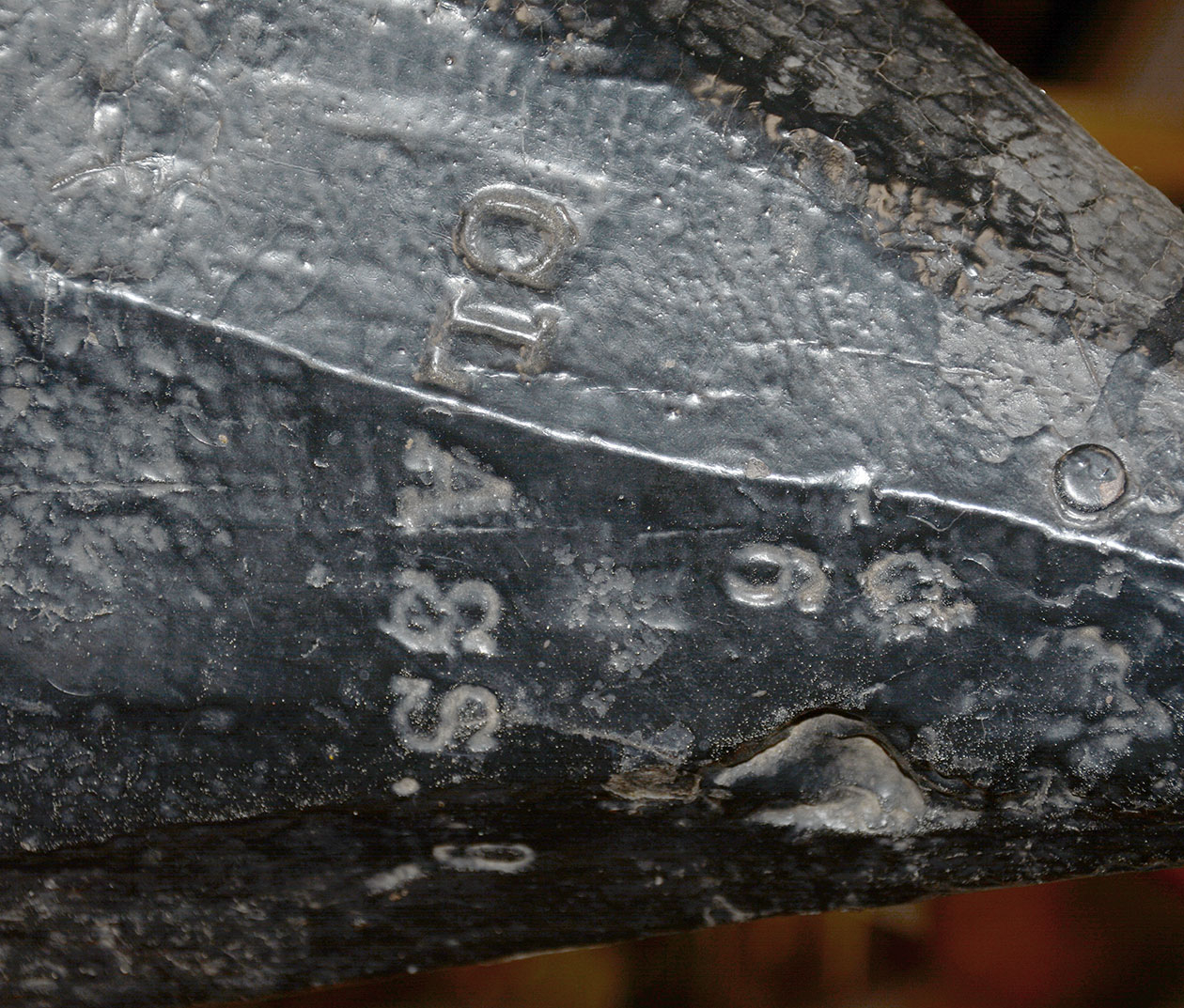
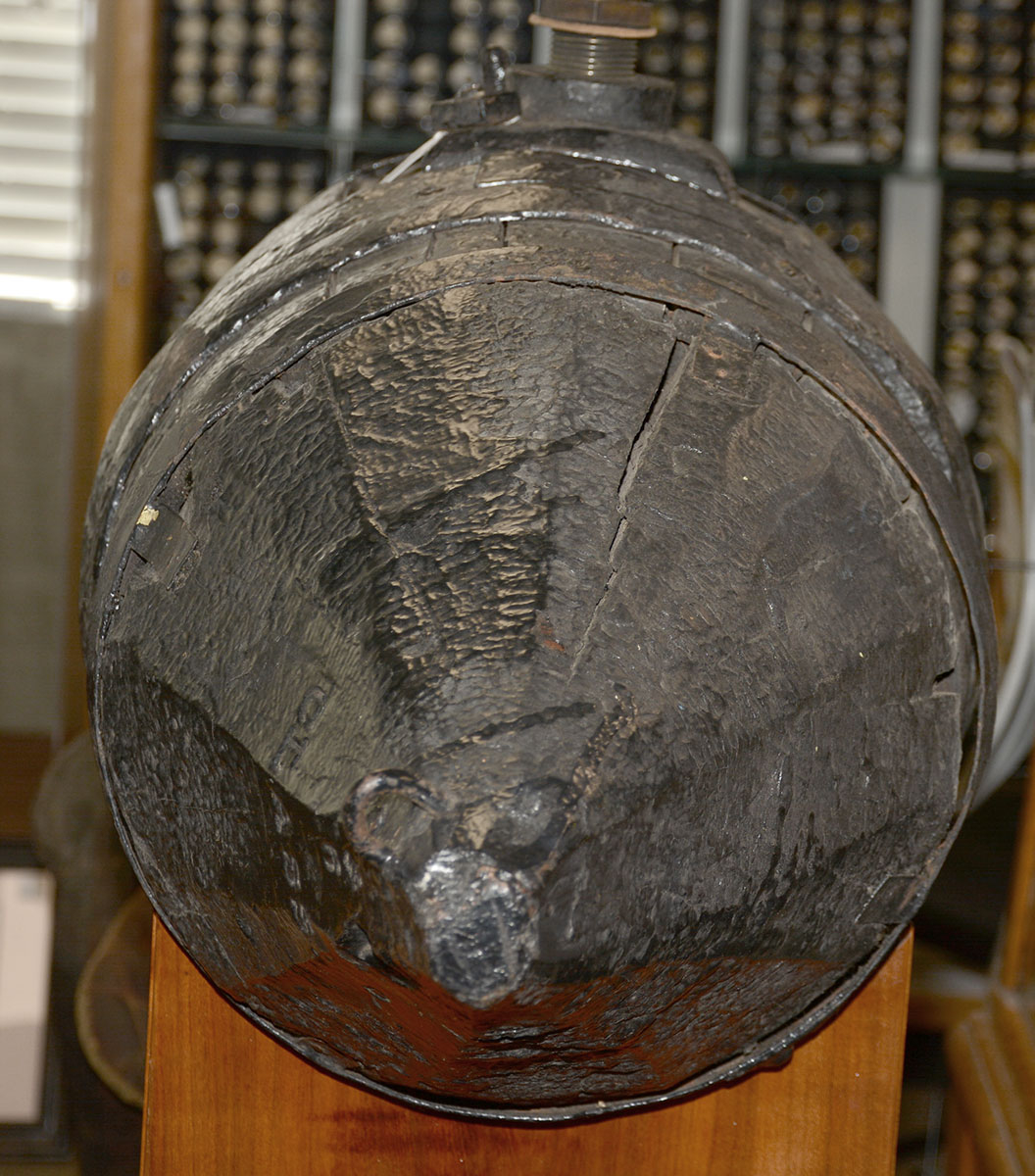
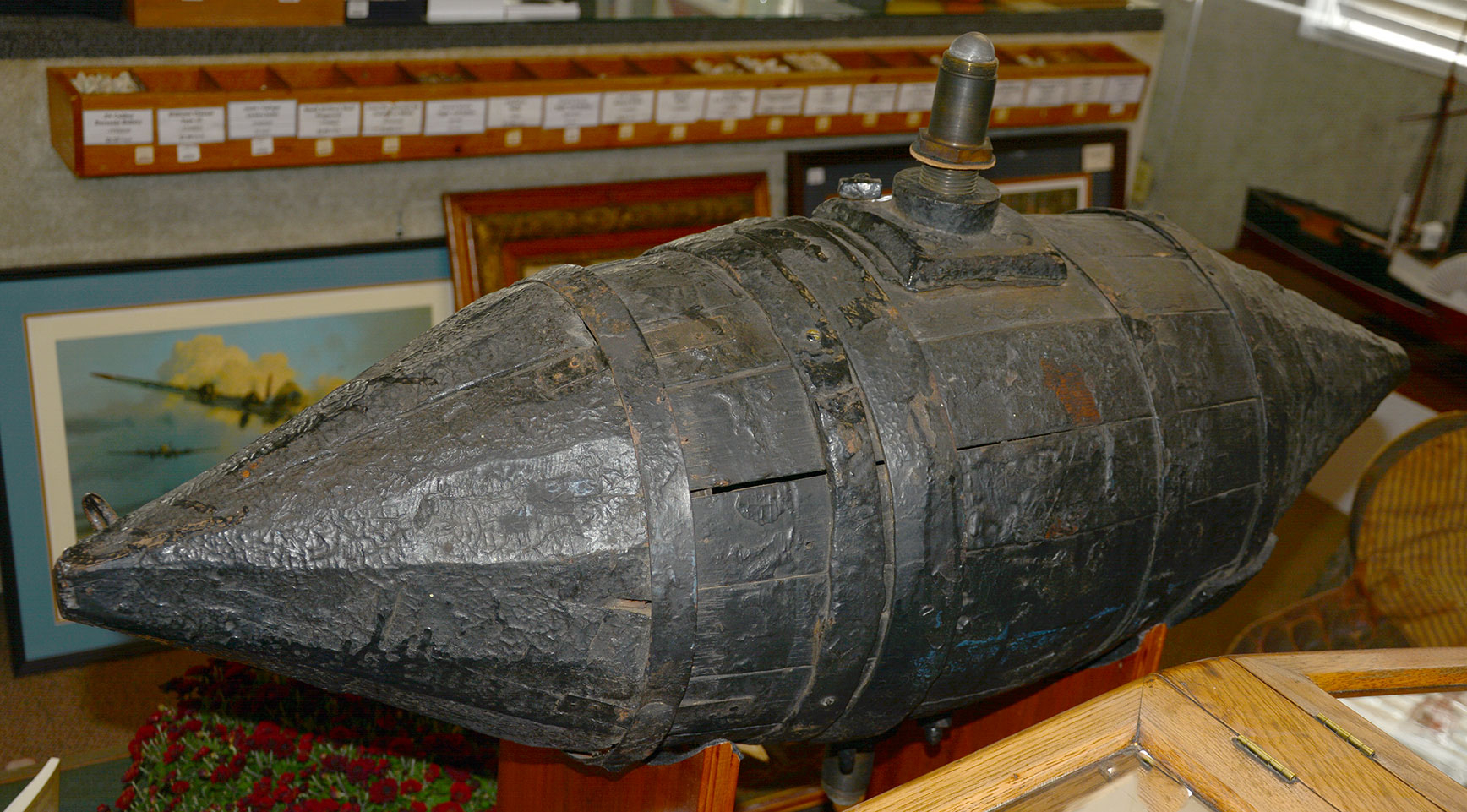
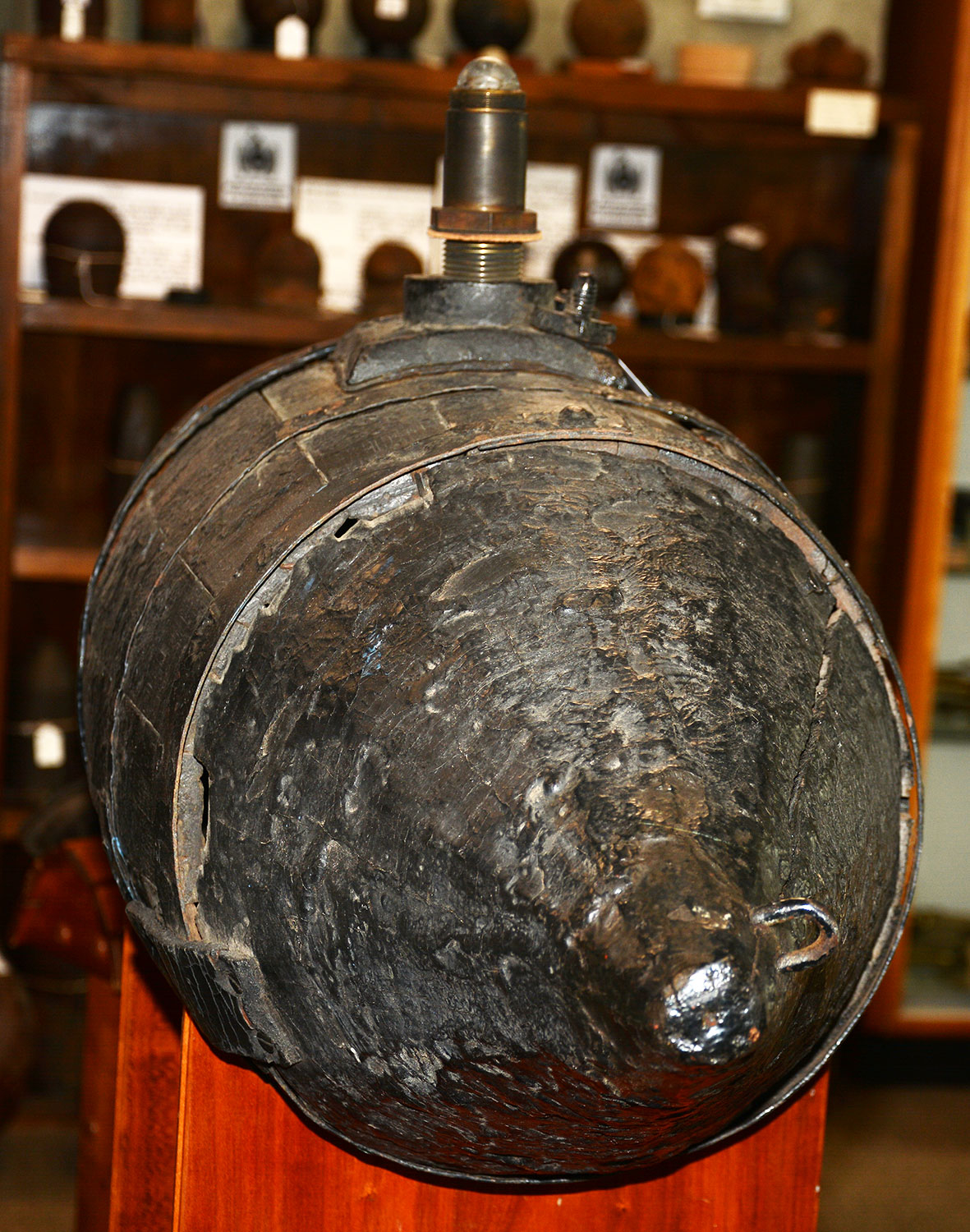
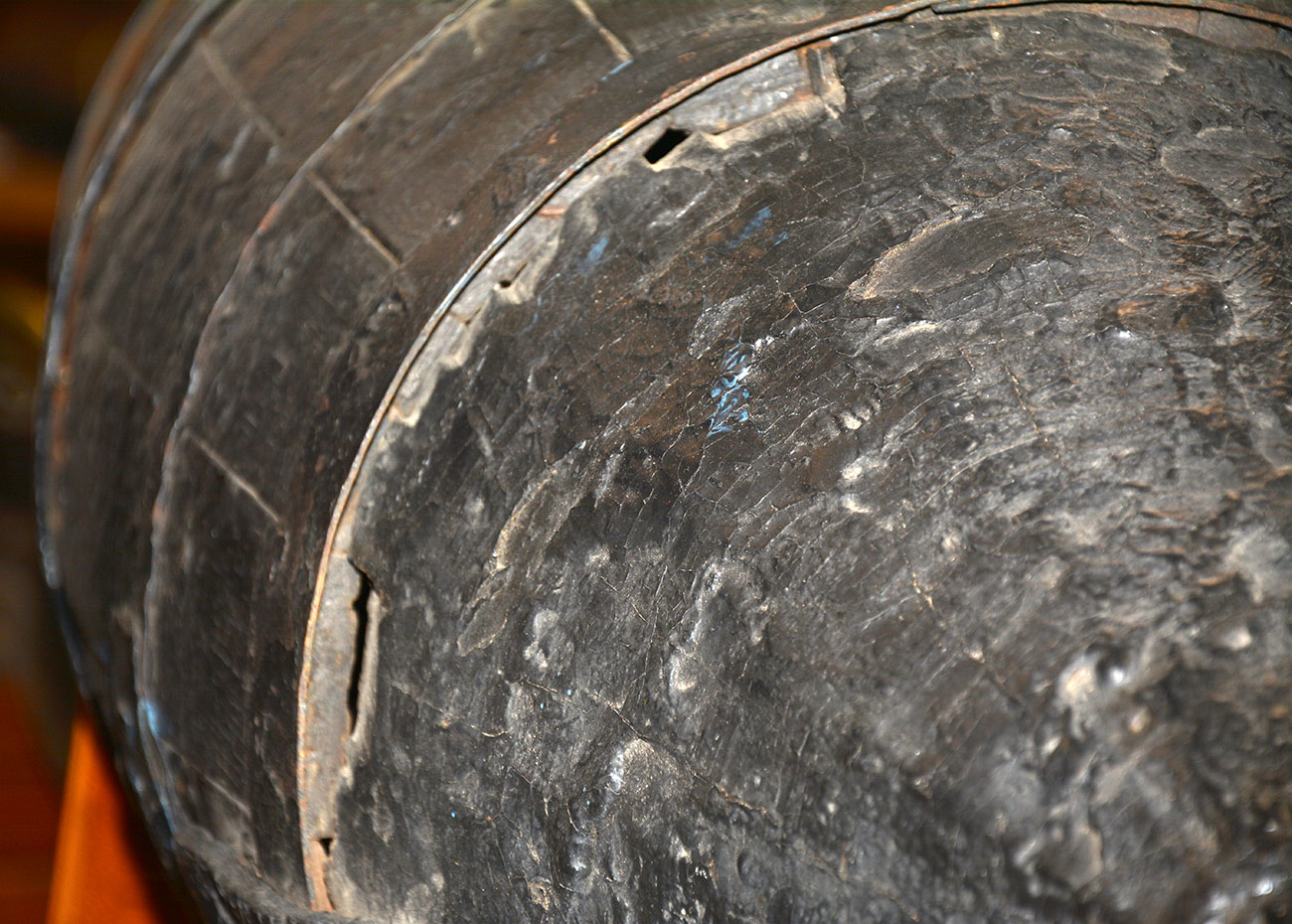
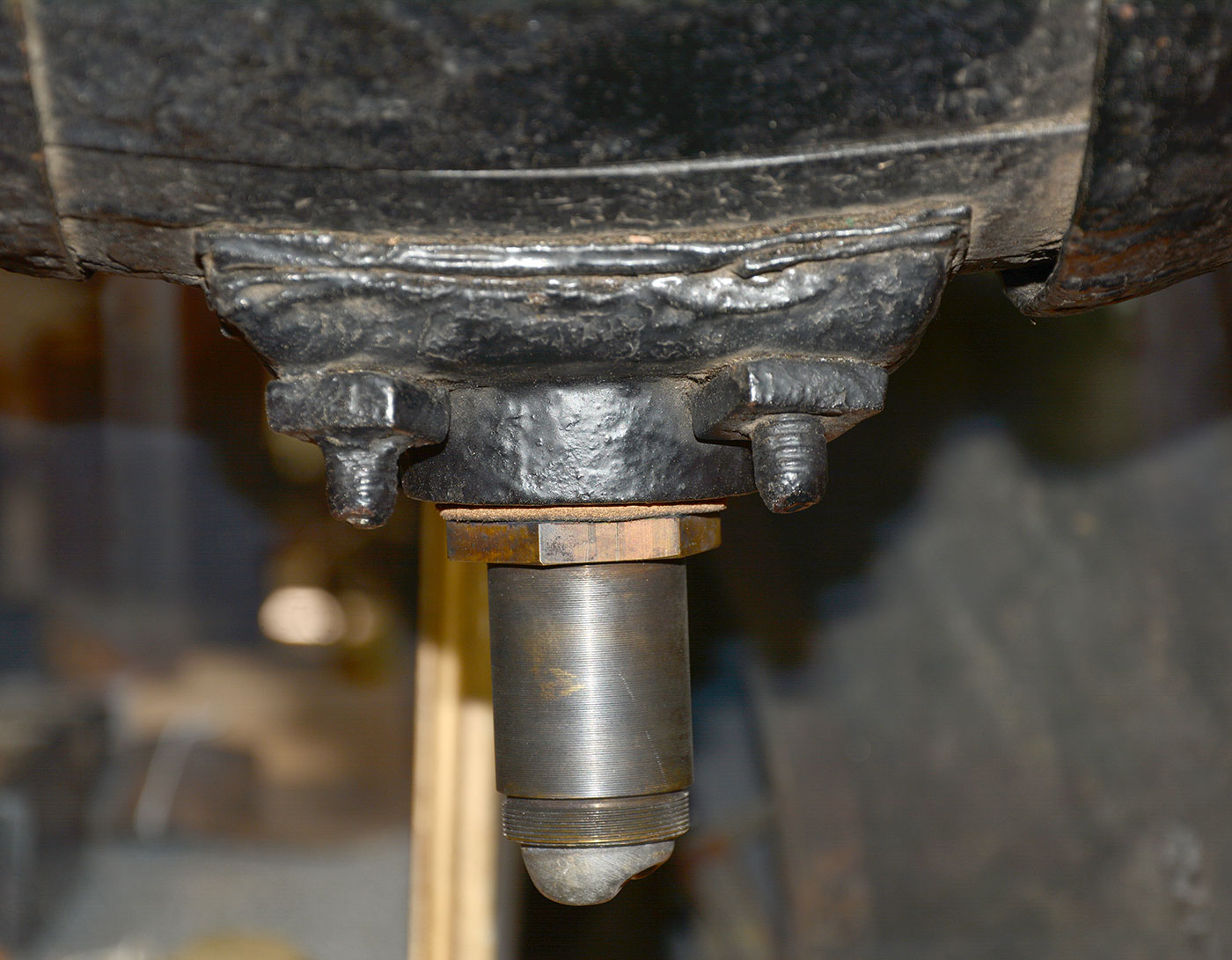
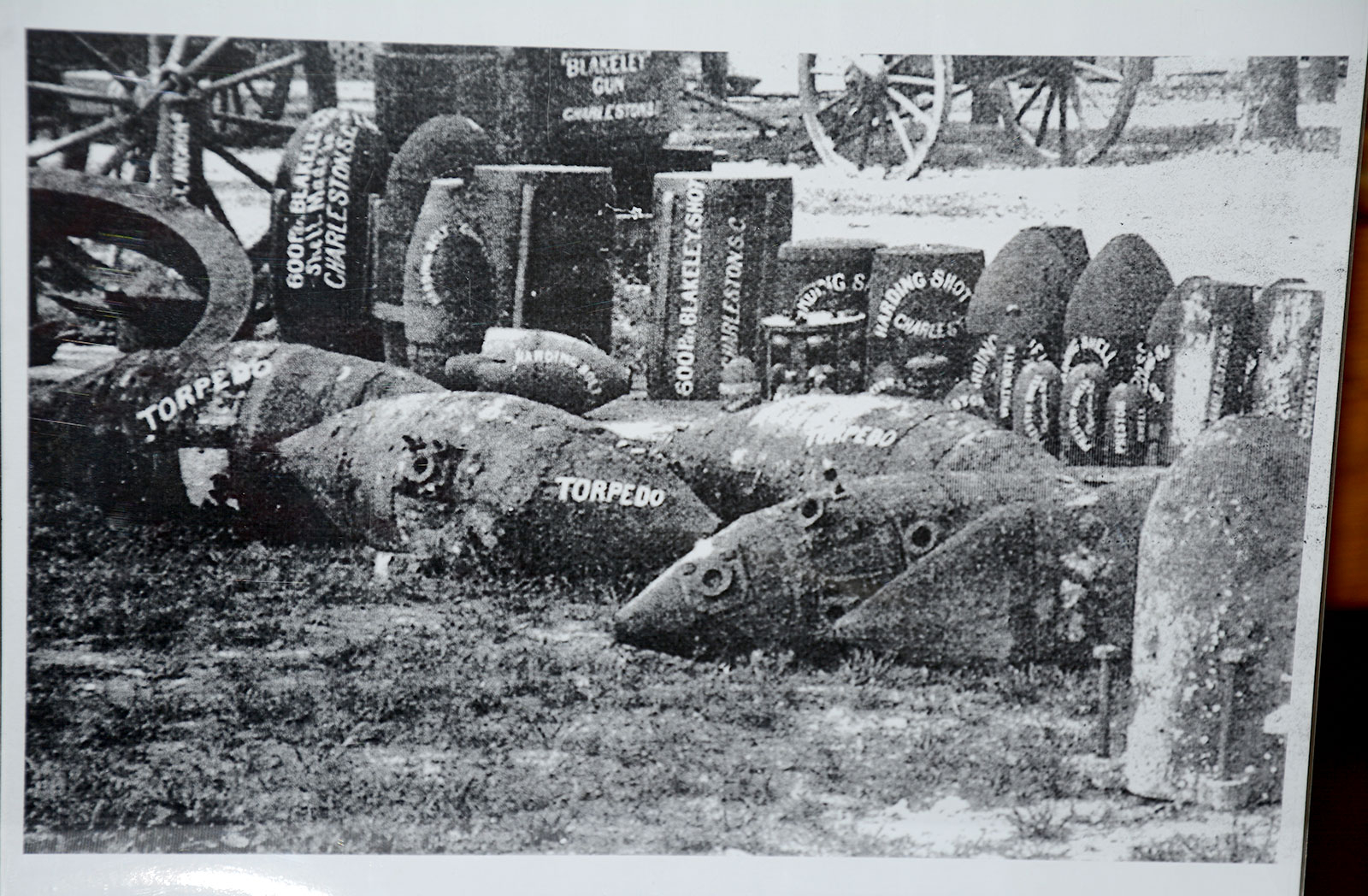
$65,000.00
Quantity Available: 1
Item Code: 1268-690
Shipping: Determined by Method & Location of buyer
To Order:
Call 717-334-0347,
Fax 717-334-5016, or E-mail
This is a Rains barrel torpedo that was recovered during the Civil War in Mobile Bay, AL. It was developed by Gabriel James Rains, Chief of the Confederate Torpedo Service. Gabriel Rains was born in Craven County, NC and entered West Point, graduating in the class of 1827. He fought in the Seminole War and recruited troops in the Mexican War. In 1861 he resigned his US commission and entered the Confederate army. By September he was promoted to Brigadier General in the Richmond area. General Rains was wounded during the Battle of Seven Pines and was singled out by Major General D.H. Hill for a successful flanking maneuver, that turned the tide of battle in favor of the Confederates. Rains, who turned 59 a few days after the battle, was one of the oldest officers in the Confederate army, and it was decided to reassign him to a less physically demanding job. After recovering from his wounds, he was then placed in command of the torpedo bureaus at Richmond. He organized the system of torpedoes and mines that protected the harbors of Charleston, Savannah and Mobile and other port cities. He had previously invented an early land mine that was successfully used in the Seminole War and subsequently at the 1862 battle of Yorktown.
The Confederates produced the torpedo’s from locally available materials. The main body consisted of a wood-stave barrel, held together by iron bands. The inside and outside walls were coated with a thick black pine tar pitch to make it water-proof. It was then filled with black powder, with a small air pocket left for buoyancy. It was found that the keg itself would roll in the current or tide and possibly dislodge from an anchor. A solid pine log was shaped and affixed to the ends, to streamline the torpedo. The apparatus for exploding is of brass, screwed into the barrel, with a thin sheet of lead soldered over a percussion cap. A tube filled with fulminating powder leads from the nipple of the plunger into the barrel of powder. Fuse plates were placed on both left and right sides of the mechanism. Side lines were slung from one torpedo to another. When one is dragged against a vessel, it is very likely to bring others in contact with the ships hull.
The first warship sank by a torpedo was the USS Cairo on December 12th, 1862 in the Yazoo River. The destruction of Union ships during the Mobile Bay campaign was severe. On August 5th, 1864 the USS Tecumseh veered left to engage the Confederate RAM CSS Tennessee and hit a torpedo mine, sinking rapidly. Rear Admiral David Farragut witnessed the incident and shouted his famous order “Damn the torpedoes! Full speed ahead!”. After the naval attack of August 5th, 1864, a total of nine US warships and a launch were sunk as a result of these infernal machines. Around 200 seamen were killed or wounded during the conflict.
In 1877 General Rains wrote in The Southern Historical Society Papers, Vol. III, numbers 4 and 5, that during the war with the Confederacy, there were 123 torpedoes planted in Charleston Harbor and Stono River. There were 101 torpedoes planted in the Roanoke River, NC, by which six US ships were sank trying to capture Fort Branch. Of the five ironclads sent with other vessels to take Mobile, AL, three were destroyed by torpedoes. There was a total of fifty-eight vessels sunk during the war. A wartime image of the Charleston Arsenal in SC shows several Rains torpedoes lying on the ground.
This torpedo is fine condition with most of the tar remaining on the outer surface. The iron bands are intact but, somewhat loose due to shrinkage. The wood also shows some shrinkage but, has most of the original coating. The nose of one end is stamped “6 over CLASS 9”. The overall length is 43 ½ inches.
This item was previously on display at the Richey-Fort Worth, TX Museum. Formerly in the Jack Tripp Collection of Charleston, SC. Also, on display (circa 1975) at the Patriot’s Point Naval and Maritime Museum, Charleston, SC. Originally acquired from an unknown source in Mobile, AL (2003 dated letter from Mr. Tripp).
This Confederate torpedo is a rare survivor offered to the public with only one other known and that being in an institutional collection. A snapshot in time of early US naval warfare. [stp] [ph:L]
~~~~~~~~~~~~~~~~~~~~~~~~~~~~~~~~~~~
THIS ITEM, AS WITH ALL OTHER ITEMS AVAILABLE ON OUR WEB SITE,
MAY BE PURCHASED THROUGH OUR LAYAWAY PROGRAM.
CLICK HERE FOR OUR POLICIES AND TERMS.
THANK YOU!
Inquire About EXTRAORDINARILY RARE AND IMPORTANT CONFEDERATE RAINS BARREL TORPEDO - 1 OF 2 KNOWN - FROM THE TEXAS MUSEUM
Most Popular
Historical Firearms Stolen From The National Civil War Museum In Harrisburg, Pa »
Theft From Gravesite Of Gen. John Reynolds »
Selection Of Unframed Prints By Don Troiani »
Fine Condition Brass Infantry Bugle Insignia »
Large English Bowie Knife With Sheath 1870’S – 1880’S »
Imported (Clauberg) Us Model 1860 Light Cavalry Officer's Saber »
featured item
A BEYOND RARE CS ARKANSAS FROCK COAT AND "BONNET DE POLICE"
Mr. Ray Richey, owner of the Texas Civil War Museum, purchased this uniform coat and hat directly from an Arkansas estate in 2003. Twenty-six years prior to this it was acquired from the Beneux Plantation in Mulberry, Arkansas. Positive… (1268-057). Learn More »


